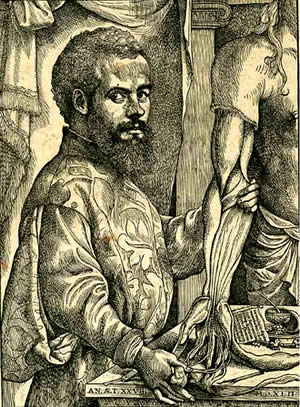What happened to the founder of human anatomy?
 A portrait of Vesalius from his Book, De humani corporis fabrica
A portrait of Vesalius from his Book, De humani corporis fabrica
In 1564 Andreas Vesalius went on a pilgrimage to the Holy Land, some said, after being accused of dissecting a living body. He sailed with the Venetian fleet under James Malatesta via Cyprus. When he reached Jerusalem he received a message from the Venetian senate requesting him again to accept the professorship, which had become vacant on the death of his friend.
After struggling for many days with adverse winds in the Ionian Sea, he was shipwrecked on the island of Zakynthos. Here he soon died, in such debt that a benefactor kindly paid for his funeral. At the time of his death he was scarcely fifty years of age. He was buried somewhere on the island of Zakynthos (Zante).
For many years it was assumed that Vesalius's pilgrimage was due to pressures of the Inquisition. Today this assumption is generally considered to be without foundation and is dismissed by modern biographers.
 Vesalius's Fabrica contained many intricately detailed drawings of human dissections, often in allegorical poses
Vesalius's Fabrica contained many intricately detailed drawings of human dissections, often in allegorical poses
It appears the story was spread by a diplomat under Emperor Charles V and then under the Prince of Orange, who claimed in 1565 that Vesalius had performed an autopsy on an aristocrat in Spain while the heart was still beating, leading to the Inquisition's condemning him to death. The story went on to claim that Philip II (the son of Emperor Charles V) had the sentence commuted to a pilgrimage. The story re-surfaced several times over the next few years, living on until recent times.
Andreas Vesalius was a 16th-century physician and author of one of the most influential books on human anatomy, On the Fabric of the Human Body. Vesalius is often referred to as the founder of modern human anatomy.